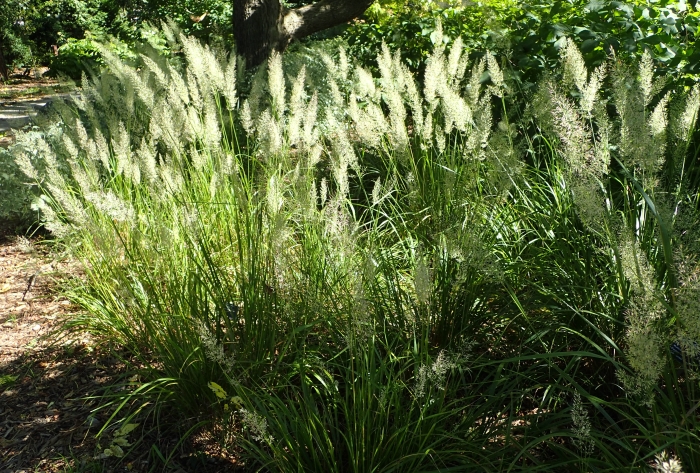Reed Grass
(Calamagrostis arundinacea)
Reed Grass (Calamagrostis arundinacea)
/
/

Krzysztof Ziarnek, Kenraiz
CC BY-SA 4.0
Image By:
Krzysztof Ziarnek, Kenraiz
Recorded By:
Copyright:
CC BY-SA 4.0
Copyright Notice:
Photo by: Krzysztof Ziarnek, Kenraiz | License Type: CC BY-SA 4.0 | License URL: https://creativecommons.org/licenses/by-sa/4.0 | Uploader: Kenraiz | Publisher: Wikimedia Commons | Title: Calamagrostis_arundinacea_kz7.jpg | Notes: Uploaded own work with UploadWizard |
































































Estimated Native Range
Summary
Calamagrostis arundinacea, commonly known as Reed Grass, is a deciduous perennial grass native to a variety of habitats including open grasslands, forest clearings, and alpine areas across Eurasia. This species thrives in temperate climates and is often found in meadows and on mountain slopes, where it contributes to the local ecology by stabilizing soil and providing habitat for wildlife. Reed Grass typically grows in tufts with short rhizomes and erect culms ranging from 60 to 150 centimeters (24 to 59 inches) in height. Its leaves are characterized by a truncate ligule 2 to 4 millimeters (0.08 to 0.16 inches) long, and obtuse, hairless leaf-blades that are 8 to 50 millimeters (0.3 to 2.0 inches) wide with a scabrous surface and an attenuate apex. The inflorescence is a feathery panicle, and the flowers feature a pair of lodicules, stigmas, and typically three anthers that are 2.4 to 2.7 millimeters (0.09 to 0.11 inches) long.
Reed Grass is valued for its graceful form and the texture it adds to the landscape, making it a popular choice for ornamental plantings, naturalistic gardens, and as a vertical accent in borders. It is also used for erosion control due to its clumping growth habit. In cultivation, Reed Grass prefers full sun but can tolerate part shade, and it adapts to a range of soil types, although it performs best in soils with slow drainage. While it has low to medium water requirements, it can tolerate periods of drought once established. Gardeners should be aware that in some regions, it can become invasive and should be managed accordingly.CC BY-SA 4.0
Reed Grass is valued for its graceful form and the texture it adds to the landscape, making it a popular choice for ornamental plantings, naturalistic gardens, and as a vertical accent in borders. It is also used for erosion control due to its clumping growth habit. In cultivation, Reed Grass prefers full sun but can tolerate part shade, and it adapts to a range of soil types, although it performs best in soils with slow drainage. While it has low to medium water requirements, it can tolerate periods of drought once established. Gardeners should be aware that in some regions, it can become invasive and should be managed accordingly.CC BY-SA 4.0
Plant Description
- Plant Type: Grass
- Height: 5-7 feet
- Width: 5-7 feet
- Growth Rate: Moderate
- Flower Color: N/A
- Flowering Season: Summer, Fall
- Leaf Retention: Deciduous
Growth Requirements
- Sun: Full Sun, Part Shade
- Water: Low, Medium
- Drainage: Medium
Common Uses
Bank Stabilization, Bird Garden, Border Plant, Deer Resistant, Drought Tolerant, Erosion Control, Rabbit Resistant, Rock Garden, Salt Tolerant
Natural Habitat
Open grasslands, forest clearings, meadows, and alpine areas across Eurasia
Other Names
Common Names: Wald-Reitgras, Metsäkastikka, Snerprørkvein, Skov-Rørhvene, Bosstruisriet, Snerprøyrkvein, Piprör, 실새풀, 실새풀(새풀)
Scientific Names: , Calamagrostis brachytricha, Calamagrostis arundinacea, Calamagrostis arundinacea var. brachytricha, Deyeuxia pyramidalis, Calamagrostis montana, Deyeuxia brachytricha, Calamagrostis sylvatica, Calamagrostis adpressiramea, Deyeuxia sylvatica
GBIF Accepted Name: Calamagrostis arundinacea (L.) Roth